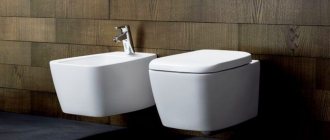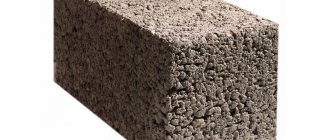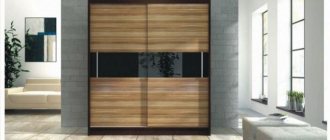Types and their brief description
Let's consider the classification of gas boilers according to various criteria:
- Based on the installation method, a distinction is made between floor-standing and wall-mounted boilers . The floor-standing unit is very powerful and is used to heat a building up to 200 sq.m., as it works together with a boiler. Wall-mounted gas boilers are more modest in size and are equipped with various devices necessary for good operation: a thermostat with a lock, a flame sensor, draft control, and automatic shutdown in case of power outages.
- By the number of contours . Single-circuit boilers are designed for one thing: either heating a room or supplying hot water. Dual-circuit models are used for both functions simultaneously.
- By type of combustion product emissions . Models with conventional draft produce emissions due to the constant flow of air from outside the building. Forced draft boilers are installed with a closed combustion chamber and a coaxial chimney.
- In terms of energy efficiency . Traditional (convection) models use a low calorific value, but require the creation of the necessary conditions to avoid condensation. There are also condensing models that use the highest calorific value and heat the air due to the formation of water vapor from combustion products on the walls of the economiser.
- By type of ignition . The device with electric ignition works automatically and is very economical. The piezo ignition must be turned on manually by pressing a special button.
Features of gas heating systems
Still, to choose a suitable device, just look at the rating of gas boilers. But what advantages do gas boilers have over other energy sources, and how does this manifest itself in everyday life?
As already mentioned, the heating system can be built on other energy sources. The very essence of the boiler is to heat a certain volume of water and then send it through the pipes. As a result, the liquid will begin to release heat into the building, and the temperature will gradually rise. But we did not mention the “triangle” of choice, which should be applied when considering each type of ASO (autonomous heating system):
- Your total budget allocated for the creation of an ASO.
- The efficiency and practicality of the device in the use of the resources provided to it, the necessary monthly costs for heating the entire building.
- Ergonomics and dimensions of the boiler. The more complex the installation, the more money from the budget will be spent on paying for the services of specialists from the gas company.
In all respects, two varieties are in the lead: gas boiler and electric. Here it is worth understanding that gas boilers are larger and much more dangerous, because in the event of a breakdown, leaks of flammable substances are possible. On the other hand, they are a little more economical and cost less. Even if there is no gas main nearby or your gas has been turned off, you can always use cylinders. And this is much simpler than an autonomous energy source, which is necessary to start electric boilers if your lights are turned off.
That is why in private homes it is better to take the gas variety. But, when choosing a product, terms such as “Single-circuit”, “Double-circuit” will often flash before you. How to understand which gas boiler is better, because even the best gas boilers for a private home, the ratings of which are posted on the seller’s website, may not suit your conditions of use. Let's figure out which gas boiler to choose and when it is better not to use it at all.
You can read about the pros and cons of single-circuit and double-circuit gas boilers at the link.
How to choose and what to pay attention to?
Power - how to calculate correctly
The power of a gas boiler is its main parameter.
To find out the power of the boiler that is needed to heat a certain area of the room, you must use the formula: Boiler power (W) = room area (sq.m.) * 10 (kW/sq.m.) + pool heat exchanger power (W, if any )+ ventilation heater power (W, if any).
To calculate the required boiler power, depending on the area and heat losses of the house, it is best to use the help of a specialist who:
- Determines the dimensions of the building and the area of all walls.
- Measure the area of all doors and windows.
- Calculate heat loss.
Number of circuits
According to the number of circuits, gas boilers are divided into:
- Single-circuit . It has only one heat exchanger, which is responsible for supplying heat to the room. Ideal for a large country house, since such buildings usually have several water points.
- Dual-circuit . Such a boiler includes two heat exchangers, which are connected to different lines. One of them is responsible for heat in the house, the second for hot water. The last heat exchanger is heated using coolant from the unit, which is responsible for heating the room. The flow of coolant through the heating circuit stops when the hot water supply is running. This means that a double-circuit boiler cannot provide simultaneous operation of hot water supply and heating. A double-circuit boiler is perfect for a small private house: you don’t have to install separate heating equipment and a separate water heater. This model will perfectly save space in the room.
Installation method
According to the installation method, gas boilers are of two types:
- Wall mounted . Compact, lightweight models that do not require a separate room. They can be installed both in the kitchen and in the bathroom. Such boilers do not have much power and will not be able to heat a large house. The heat exchanger of wall-mounted boilers is made of steel. It is worth noting the inexpensive price of such models.
- Floor-standing . Such boilers have impressive dimensions and heavy weight (up to 100 kg). Such units are usually located in boiler rooms. Floor-standing boilers most often have an open combustion chamber, which requires high-quality forced ventilation in the house. Due to their large size, floor-standing models are very powerful and can heat a large private house. In addition, such units last longer, as they are made of the highest quality materials (for example, a heat exchanger made of cast iron). Floor-standing boilers are much more expensive than wall-mounted ones, and you will also have to purchase circulation pumps and an expansion tank separately.
Type of ignition and burner
Common ignition options in gas boilers are:
- Piezo ignition . The action of this ignition is semi-automatic and is similar to the operation of the piezoelectric element in conventional lighters. In the boiler device, on the body of the gas boiler, there is a special valve. Pressing this button activates the unit - a spark appears and the gas combustion process starts. Piezo ignition should be chosen for its convenient design and operation without interaction with electricity.
- Electric ignition . In this case, the gas boiler begins to operate in automatic mode. This results in good energy savings. However, electric ignition requires a connection to electricity, and if there are problems with it, the gas boiler will not warm up. At the same time, a boiler with electric ignition has a protection system that blocks access to energy.
Gas burners come in a . The former function due to the natural flow of oxygen (requires good ventilation and chimneys to remove combustion products).
The second type of burner is the most modern, equipped with compact chimneys extending outside the building. A turbocharged burner is practically safe - the gas burns in an isolated chamber.
Heat exchanger material and design
A single-circuit boiler has a simple structure: its heat exchanger consists of steel plates, which increase the heat capacity of the device, and copper pipes, through which the thermal conductivity of the building’s heating system circulates.
Such a heat exchanger is primary, its task is to transfer the energy of fuel combustion to the coolant burner.
A double-circuit boiler has a secondary (plate) heat exchanger, which consists of plates and pipes . It prepares liquid for hot water supply to the room. Such a heat exchanger consists of steel, copper or cast iron.
Combustion chamber type
The combustion chambers in a gas boiler are divided into:
- Open . Such boilers take combustion air from the room in which they are located. To use this combustion chamber, good ventilation in the building is necessary so that the exhaust gases move freely into the chimney.
- Closed . Air enters the combustion chamber and is forced out into the chimney using a fan. The unit can take air both from the house and from the street, which is very convenient. Air is taken in through one pipe and exhausted through the other.
Aspirated or turbocharged
There are two types of burners for gas boilers; let’s determine their differences:
- Atmospheric . The product has a standard method for removing combustion products. This burner must be installed together with a smoke exhaust system. Such devices are less powerful than turbocharged ones, but are cheaper.
- Turbocharged . The second name is an inflatable burner. Uses an electric turbine that provides forced ventilation of the combustion chamber. The cost of inflatable burners is quite high.
Additional functions
A high-quality modern gas boiler must include a valve that cuts off the gas supply, as well as a security system with all kinds of sensors.
In addition, gas equipment manufacturers include useful functions in their gas boilers:
- built-in boiler - for filling a large bath or pool with hot water;
- water heated floors - use additional equipment called a mixing unit;
- burner modulation function - for economy, ensures mixing of air and fuel in the correct proportion;
- cascade function - redundancy if any elements fail;
- intelligent regulation - the system selects a certain temperature in each room and changes it depending on the time of day, etc.
In which houses is it not recommended to install a gas boiler?
The already mentioned parameter of unsafety of a gas boiler should be taken into account when choosing and planning a room. If you do not have the opportunity to build a separate boiler room, it is better to think several times before installing the device in the kitchen.
You might be interested >> The operating principle of a condensing gas boiler
First of all, if you live in a region with excessively dry air, and you have a lot of flammable materials in your house (the walls are insulated with materials of standard G2 and higher, and the main material is wood), then a gas boiler is the worst choice for ASO, which you only you can do. This is where the electric version comes into play, safer and easier to install. In addition, with a power above 60, placing boilers in the kitchen is completely prohibited according to fire safety rules.
But don't worry - you will still have to send an application and house planning documents to the gas company before installation. And there the specialists will immediately see if there is a serious danger to the residents and refuse to install it. Also, you should not install boilers in houses where ventilation is poor or there is no chimney. When burned, gas breaks down into toxic substances and carcinogens, and the breakdown of intermolecular bonds leads to the release of heat. If you do not take care of the removal of all these combustion products, you will face extremely unpleasant consequences.
Popular manufacturing brands and their brief descriptions
Today you can purchase boiler equipment from a variety of manufacturers, both foreign and domestic.
When buying gas equipment, you need to pay attention to the presence of an automatic safety system . You should not skimp on the excellent quality of the device, because life and health are more valuable than any money. When purchasing a gas boiler, you need to study the terms of warranty service.
Our country is characterized by unstable operation of the gas network, low air temperatures, and poor water quality. When choosing a boiler, adapt it as much as possible to modern Russian conditions.
At the moment, the following manufacturers have proven themselves well in the market:
- Buderus and Viessmann . German companies that produce Premium class boilers are reliable, easy to use and install.
- Ariston, Hermann, Baxi (Italy), Electrolux (Sweden), Unitherm (Germany), Protherm Slovakia) . They produce middle-class equipment - not too expensive, not very prestigious, but quite high quality.
- Feroli, Neva Lux (Russia) . Budget class boilers, which have a shorter service life, but have affordable prices.
Rating of gas boilers for heating a private home
Let's make a rating of gas boilers for heating a country house, which differ in reliability in operation and quality of workmanship. We will determine the 3 best models in their “weight category”.
Top 3 wall-mounted gas boilers
So, let's go.
One of the most popular boilers is the Viessman Vitopend 100W A1HB003 model
Viessmann is a German brand that specializes in the manufacture of heating and cooling systems, including the manufacture of gas boilers. The model is quite reliable, especially suitable for those who are chasing German quality. German gas boilers Weissman Vitopend 100W are supplied with different powers to allow you to choose the area of the heated room. There are boilers with three levels of power consumption: 24, 30 and 34 kW.
In a temperate climate, the boiler’s power is enough to heat a house up to 250 m². The dimensions of the boiler are quite small (400x340x725) mm, as is the gas consumption. At maximum power, gas consumption is about 3.5 m³ of gas per hour. Among the advantages, we can also note the ability to work on LPG (liquefied petroleum gas), a modern diagnostic system and a fairly high efficiency (about 93%). The cost of a gas boiler is around 45,000 rubles.
TOP 5 gas boilers
Buderus Logamax UO72-24K 24 kW
The geyser is equipped with functions of auto-diagnosis, frost protection, flame modulation, pump blocking protection, auto-ignition, etc..
You don't have to worry about danger with the gas control system, safety valve and air vent. Boiler weight - 31 g, dimensions - 400 * 700 * 299 mm.
Specifications:
- type of boiler - gas, convection;
- burner type - gas;
- number of circuits - two;
- power - 7.20-24 kW;
- heat load - 8-26.70 kW;
- combustion chamber type - closed;
- Efficiency - 92%;
- regulation - electronic;
- placement - wall;
- primary heat exchanger material - copper;
- mains voltage is single-phase;
- circulation pump - yes;
- expansion tank - yes, 6 l;
- fuel - natural and liquefied gas;
- natural fuel consumption - 2.8 cubic meters. m/hour;
- liquefied fuel consumption - 2 kg/hour;
- natural fuel pressure - 10.50-16 mbar;
- liquefied gas pressure - 35 mbar;
- hot water productivity at a temperature of 30 degrees - 11.4 l/min;
- maximum water pressure in the hot water supply circuit - 10 bar;
- The maximum water pressure in the heating circuit is 3 bar.
Advantages:
- good price;
- high-quality assembly;
- holds temperature well.
Flaws:
- not very clear controls;
- boards do not work well due to voltage surges.
Lemax Premium-10 10 kW
The gas boiler has overheating protection functions and a thermometer. Equipped with a gas control security system. Product weight - 41 kg, dimensions - 330*784*499 mm.
Specifications:
- type of boiler - gas, convection;
- burner type - gas;
- number of circuits - one;
- power - 10 kW;
- combustion chamber type - open;
- Efficiency - 90%;
- regulation - mechanical;
- placement - floor;
- primary heat exchanger material - steel;;
- fuel - natural gas;
- consumption of natural fuel - 1.2 cubic meters. m/hour;
- natural fuel pressure - 13 mbar;
- maximum water pressure in the hot water supply circuit - 1 bar;
- maximum coolant temperature - 90 degrees
Advantages:
- acceptable price;
- compact dimensions;
- good efficiency;
- efficiency.
Flaws:
- there is condensation;
- Sensors and thermometers cannot be connected.
Lemax Premium-20 20 kW
Gas boiler capable of heating a room up to 200 sq.m. It has overheating protection, a thermometer and a gas control function. The model can include functions of self-diagnosis, frost protection, auto-ignition, etc.
Specifications:
- type of boiler - gas, convection;
- burner type - gas;
- number of circuits - one;
- power - 20 kW;
- combustion chamber type - open;
- Efficiency - 90%;
- regulation - mechanical;
- placement - floor;
- primary heat exchanger material - steel;
- fuel - natural gas;
- natural fuel consumption - 2.4 cubic meters. m/hour;
- natural fuel pressure - 13 mbar;
- The maximum water pressure in the heating circuit is 3 bar.
Advantages:
- good price;
- easy to operate;
- silent.
Flaws:
- heat exchanger made of steel.
Leberg Flamme 24 ASD 20 kW
The wall-mounted boiler runs on natural gas, ignition is automatic. The model is characterized by high performance and long service life.
Specifications:
- type of boiler - gas, convection;
- burner type - gas;
- number of circuits - two;
- power - 20 kW;
- combustion chamber type - closed;
- Efficiency - 96.1%;
- regulation - electronic;
- placement - wall;
- mains voltage is single-phase;
- circulation pump - yes;
- expansion tank - yes, 6 l;
- fuel - natural and liquefied gas;
- natural fuel pressure - 20 mbar;
- hot water productivity at a temperature of 25 degrees - 12.7 l/min;
- maximum water pressure in the hot water supply circuit - 6 bar;
- maximum water pressure in the heating circuit - 3 bar
Advantages:
- made of high quality, from good metal - brass;
- good price;
- convenient functionality;
- compact dimensions;
- warms well.
Flaws:
- There are problems with circulation.
MORA-TOP Meteor Plus PK24KT 23 kW
Gas boiler for heating residential premises. Equipped with electronic sensors for measuring water temperature and a gas control system.
Specifications:
- type of boiler - gas, convection;
- burner type - gas;
- number of circuits - two;
- power - 8.90-23 kW;
- heat load - 10.50-25.50 kW;
- combustion chamber type - closed;
- Efficiency - 90%;
- regulation - electronic;
- placement - wall;
- mains voltage is single-phase;
- expansion tank - yes, 6 l;
- fuel - natural gas;
- natural fuel consumption - 2.67 cubic meters. m/hour;;
- natural fuel pressure - 13-20 mbar;
- hot water productivity at a temperature of 30 degrees - 11.2 l/min;
- maximum water pressure in the hot water supply circuit - 6 bar;
- maximum water pressure in the heating circuit - 3 bar
Advantages:
- economical;
- electronic control with display;
- built-in circulation pump;
- auto-ignition and auto-diagnosis.
Flaws:
- high price.











